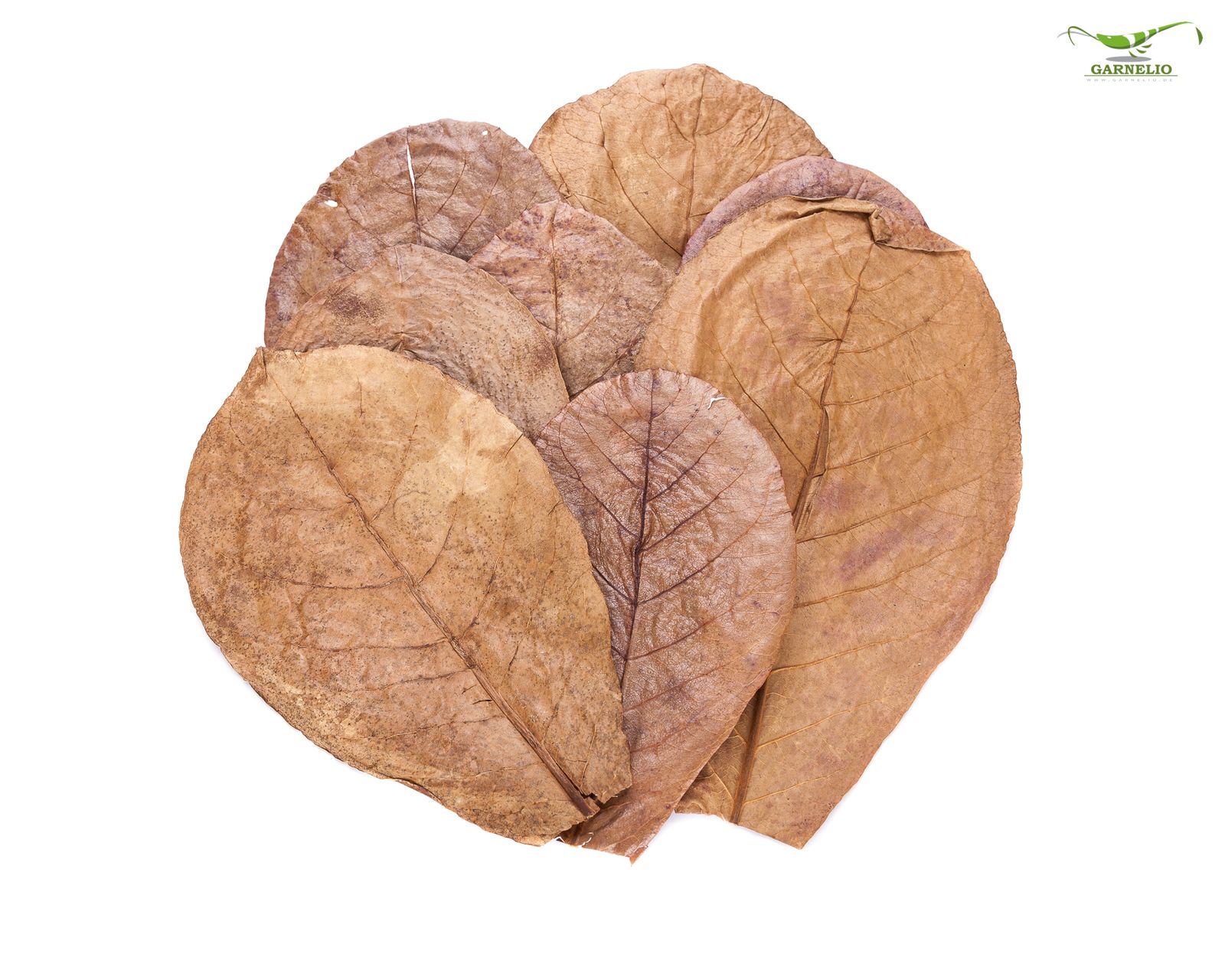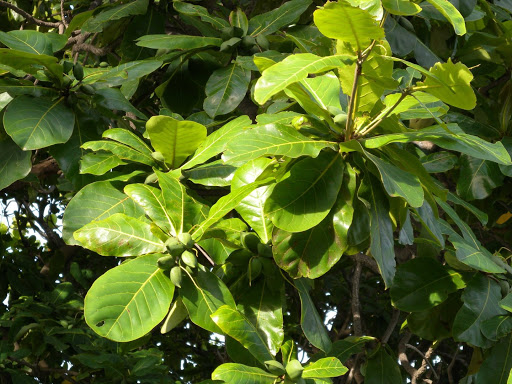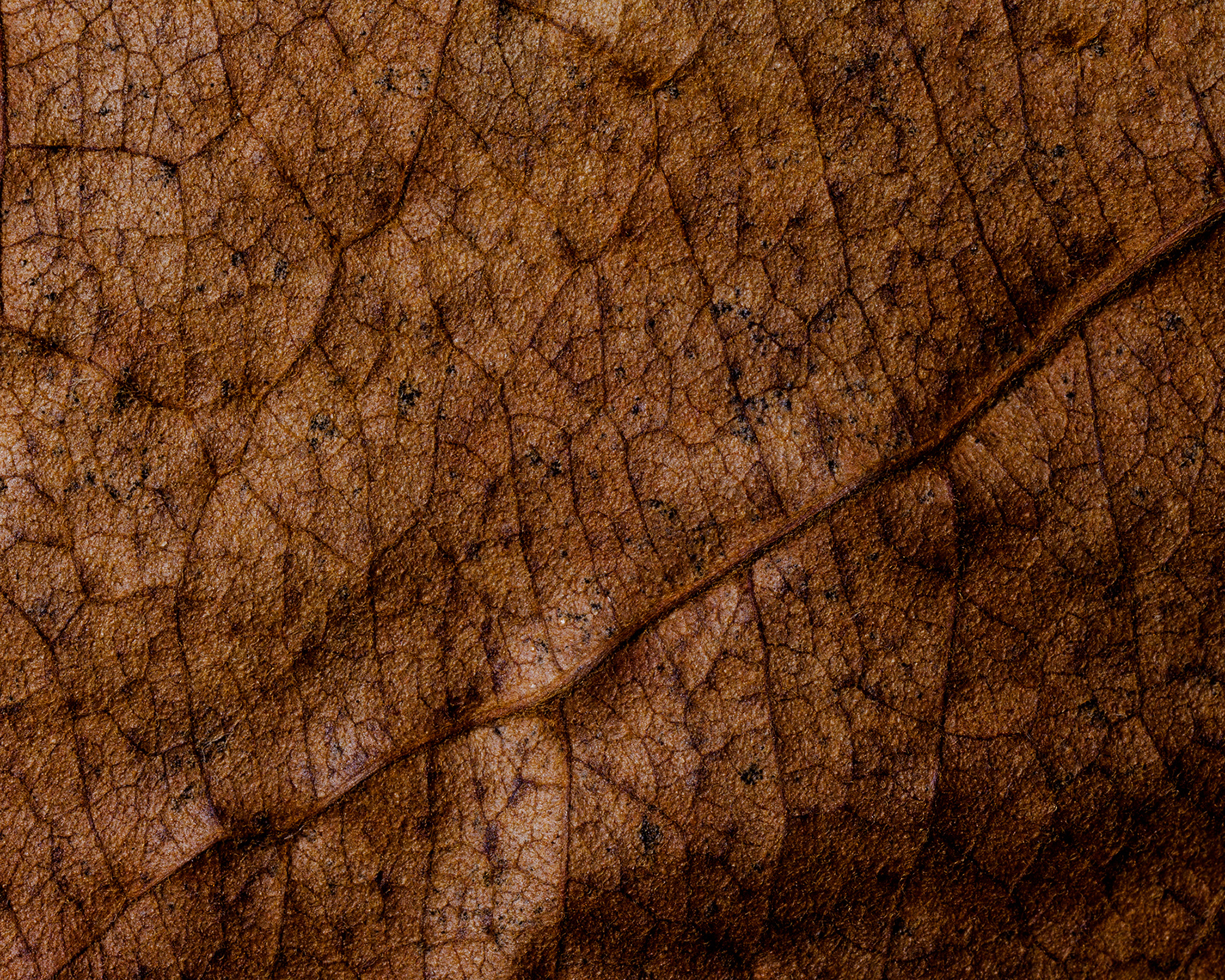Sea almond tree leaves in the aquarium
Table of Contents
The deciduous tree Terminalia catappa is also called Indian almond, sea tree or catappa tree, but in aquaristics we know it as Indian sea almond tree. Sea almond trees, however, are found not only in India, but throughout Southeast Asia, Africa, Central and South America, and also in parts of Australia. The beautiful large-leaved trees are often used as shade trees, but also as fruit trees - the fruits are edible
A short history of sea almond tree leaves in aquaristics
The dried brown leaves of the sea almond tree have been used in Thailand for a long time to treat the injuries of fighting fish after fights, and sea almond tree leaves or Catappa Leaves have made the leap into aquaristics here in Europe for a long time. Especially for aquarium animals like shrimps, crabs or crayfish people like to use them - they are not only an excellent long-term food, but also contain many healthy ingredients.

Premium sea almond leaves from NatureHolic
The dried premium sea almond tree leaves from NatureHolic come from controlled cultivation and are individually hand-harvested, gently dried and carefully packaged especially for us. With us in the online store you get premium quality that you can rely on.
The effective ingredients of sea almond tree leaves
Sea almond tree leaves are not only suitable as permanent food, but can also be used to treat diseases in aquarium animals. Their ingredients read like a pharmacist's journal. Sea almond tree leaves contain the following secondary plant compounds and vital substances, among others:
Flavonoids
Flavonoids have antioxidant properties and also have anti-allergic, antiviral and antimicrobial effects, among others, thus potentially protecting aquarium animals from pathogens.
Tannins
Tannins have antiseptic, antifungal, antiviral and antibacterial effects and are also strong antioxidants. In addition, tannins have an astringent, or astringent, effect. In shrimp, crabs and shrimps, they can have a positive effect on molting.
Saponins
Saponins are an important component of many medicinal plants. These substances have an anti-inflammatory and strengthening effect on the organism.

How do sea almond leaves work in the aquarium?
All in all, it can be said that Catappa Leaves have multiple effects in the aquarium. They can be used against bacterial infections, they can be effective against fungal infections (mycoses) and viral infections, they have an antioxidant effect and can inhibit inflammation. They also have a promoting effect on molting in crustaceans such as shrimp, crabs, dwarf crabs and crayfish.
Sea almond tree leaves can be used to prevent and treat injuries, fungal and mycotic infections, bacterial diseases such as fin rot in fish or bacterial infections in shrimp. A piece of sea almond leaf in the breeding aquarium will prevent spawning fungus.
Sea almond leaves can also be used to kill ectoparasites such as sucking worms or gill worms, and they are useful for supporting aquarium fish with mucosal damage, bite wounds and injuries of all kinds. Sea almond leaves can also be used to support crayfish after fights that result in limb or claw loss.
Use of sea almond tree leaves
Sea almond tree leaves release some of their active ingredients into the aquarium water, where they can reduce the number of harmful germs in the aquarium water. In addition, the pH value is slightly lowered and the water is slightly acidified.
The effect of the sea almond leaves can be recognized by a pretty, light amber tint of the aquarium water. It is not to be confused with a milky white or greenish turbidity, which would indicate a bacterial bloom or an algae bloom.
Tannins and humic substances occur naturally in almost all natural waters, and our aquarium animals are naturally accustomed to these important substances and also depend on them to some extent. So the coloration is not bad or dangerous, but on the contrary helpful! In addition, the colors of ornamental fish, aquarium invertebrates and aquatic plants come out better in light amber water, and the aquarium looks much more natural.

Dosage of sea almond leaves
For prevention, add 1 large sea almond leaf to 50 to 100 liters of aquarium water. For treatment of acute problems such as bacterial infections, fin rot, mycoses, parasite infestations or other signs of disease in ornamental fish, shrimp, crabs or crayfish, you can add 2-3 sea almond leaves to this amount of water. The active substances in the leaves of the Indian Sea Almond Tree are used up after about two weeks, so you should add a new leaf at the latest then.

Sea almond leaves as food
there is no need to take "used" sea almond leaves out of the aquarium, on the contrary, they can be perfectly used as a very well accepted permanent food for shrimps, snails, crayfish, dwarf crayfish and crabs in the aquarium or aquaterrarium. Especially the older leaves are already somewhat softened, and the tissue has been broken up by bacteria, so that it is readily eaten by the aquarium inhabitants. Sea almond leaves can be safely left in the aquarium until they are completely eaten.
